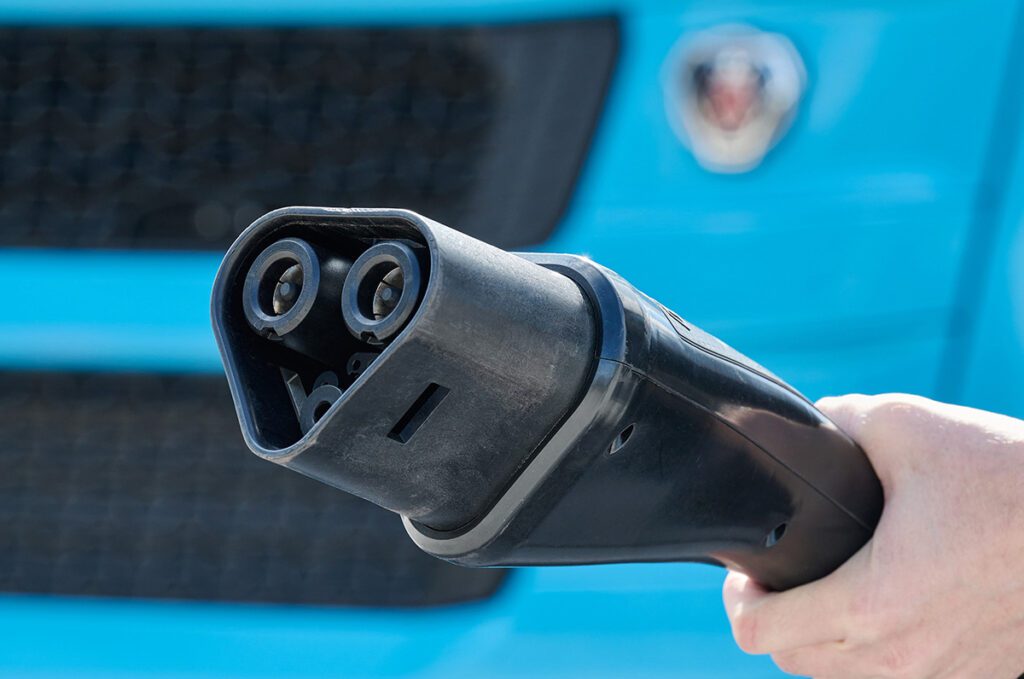As it prepares for the first deliveries of its R1T pickup truck and R1S SUV, Rivian is taking a page from Tesla’s book, making plans to set up its own public charging network (Tesla wasn’t thrilled about sharing that particular page—in July, it sued Rivian, claiming that the younger company had stolen trade secrets).
As is standard practice, Rivian’s new network will include fast chargers located along interstate highways. However, in a unique innovation, it will also include Level 2 destination chargers at adventurous destinations such as mountain bike and hiking trails, kayaking spots and perhaps near popular climbing crags. Rivian is aiming its vehicles at outdoorsy, off-road drivers, and the Rivian Adventure Network will cater to this demographic.
“We’re excited about the opportunity to create Rivian charging locations that aren’t on the interstate, that help draw you or enable you to go to places that normally are not the kinds of places that invite or welcome electric vehicles because of charging infrastructure,” Rivian founder and CEO RJ Scaringe told TechCrunch in a recent interview. “We’ve spent a lot of time thinking about how you can essentially create these curated drives where, depending on your point of interest, you can pick different paths. If you want to stop midway through the trip for a one-mile, two-mile or five-mile hike, you know, here’s a route that you want to take and here’s a charging location right next to it.”
Rivian developed its own high-speed DC charger in-house. The hardware platform will also be used for a fleet-oriented product, said Scaringe. “If you think of commercial vans, the charger and the dispenser may look a little different, but the guts of these power modules that are used to build up the charging capability are identically applied in these very different applications. It’s one of the reasons we built all that core competency, so we can build both fleet-based B2B charging solutions and the consumer-facing Adventure Network for Rivian customers.”
Scaringe tells TechCrunch that the Rivian Adventure Network is about taking control of the entire EV ownership experience (another page from the Tesla playbook). He doesn’t want to see Rivian customers relying completely on third-party charging networks. “The challenge is we don’t control those networks, so the payment platforms, the uptime, the performance, the ability to reserve a charger—all those things that take the friction of charging away—we don’t truly control. With the Rivian Adventure Network, we have 100% control of that; we get to know what vehicles are charging or how they’re charging, the rates. We can be really creative in terms of locations, so it can allow us to get to places that are very specific and unique to Rivian.”
Rivian’s network will use the CCS charging standard, but it isn’t clear at this point whether it will be open to non-Rivian drivers, and on what terms.
Scaringe says his company will deploy “dozens of charging stations,” each with an average of six individual charging connectors, by the end of 2021. Many more are planned. “The scale of a network is not something that you can turn on overnight,” he said. “It takes months of time to get full coverage of the US, and years of time to get dense coverage, which by 2023 or 2024, we will certainly have.”
Source: TechCrunch











































































































